The SIG Sauer P365 is not a new pistol as it debuted back at the 2018 SHOT Show where I first got hands on with the micro-compact pistol.
At the time and based on what I saw on the SHOT Show floor, I felt the SIG Sauer P365 would become one of the most popular CCW pistols and for the most part it has.
SIG put out a micro-compact 9mm with 10+1 capacity that is ergonomically compatible with a good portion of the consumer market, and kicked off increased demand for highly concealable, highly effective pistols for everyday defensive carry.
However, as impressed as I was at the 2018 SHOT Show, I was disappointed because as a person in California, I knew that I would not be able to buy one due to California pistol laws.
Fast-forward to 2023 when SIG Sauer released a California compliant version of the SIG P365 that was approved by the California Department of Justice for sale in California. In order to make it onto the California “Safe” Handgun Roster, SIG changed the original P365 design and created a P365 with an external manual safety, a loaded chamber indicator (LCI), and a magazine disconnect. While I was surprised by the California compliant SIG P365, I did not jump to go buy one because I was content with my existing primary carry gun, the Glock 26.
After a couple years of the SIG P365 being available in California, I decided to revisit the SIG Sauer P365 because I was starting to become more aware of my Glock 26 when I carried it. That is to say, it just felt bulky, especially when I am only wearing a dress shirt and cannot wear a jacket, vest, sweater, or other layer.
I began investigating the SIG P365 and after seeing the reduced price I was able to get by way of the SIG Sauer NRA Instructor program, I ordered a SIG Sauer P365 directly from SIG and processed at a local FFL.
The specific SKU that I acquired is the 365-9-BXR3P-MS-CA, which is the SIG P365 Micro-Compact in 9mm, and is essentially the same core base model that was first released back in 2018, except it is optics ready (and has the California compliant features added).
A quick summary of the specifications:
- 9mm Luger
- Nitron finish
- Stainless steel slide
- Striker-fired
- Optics ready for Shield RMSc footprint
- 3.1 inch (78.74 mm) barrel
- 5.8 inch (148 mm) overall length
- 1.1 inch (28 mm) overall width
- 4.3 in (109 mm) overall height
- 18 oz (500 g) weight w/magazine
Skipping the core features that everyone is already aware of as the pistol has been out for several years, I wanted to get into the three California compliant features.
First off is the external manual safety. This is added to the rear of the frame and firing control unit.
I was not all that concerned by the external manual safety because I could always carry with the safety off. However, I have been training in such a way that I can disengage the safety as part of my draw or presentation of the firearm onto target.
The second California compliant feature is the loaded chamber indicator or LCI.
The SIG implementation of the LCI on the P365 is a metal piece that pops up from the slide whenever a round is in the chamber. The plate covering the optic mounting surface has “Loaded When Up” text to make it obvious what the LCI is.
The LCI detent protrudes to provide a visual and tactile method of checking the chamber is loaded by touching the top of the slide.
I was also not overly concerned with the LCI even though I still rely on press checks for checking the chamber. However, I did end up removing the LCI which I will discuss later in this review.
The third feature is the one feature I was very concerned about and is the one characteristic about this pistol that kept me from immediately buying one, and that is the magazine disconnect.
For those who do not know what a magazine disconnect is, it is a mechanical design in the firearm that does not allow the gun to be fired (trigger will not pull to activate the striker) if there is no magazine in the gun.
This is an undesirable feature on a pistol and is fundamentally unsafe even though people think it makes a gun more safe.
First of all, a foundational aspect of showing that a firearm is safe, clear, and in placed in a safe condition is to remove the magazine, empty the chamber, confirm empty, point the firearm in a safe direction, and pull the trigger to drop the hammer or striker. At that point, the pistol is not cocked, has no round in the chamber, or the feeding mechanism making it safe.
A magazine disconnect renders this very common procedure unusable since it requires a magazine to be in the firearm for the trigger to be pulled. But this is counter to the whole concept of showing the firearm is safe by removing the magazine, emptying the chamber, and pulling the trigger while pointed in the safe direction.
People may argue that removing the magazine should mean it is safe, hence the magazine disconnect. This is completely counter to all safe gun handling. The fact that the magazine is removed should never be the one and only characteristic of a safe condition and the whole idea of the magazine being removed should indicate the gun is safe is due to a lack of training and understanding of firearms.
Aside from this firearms handling safety issue, the other reason why I feel the magazine disconnect is unsafe is because it is a failure point for any defensive pistol. There are self-defense scenarios where a magazine may not be in the pistol, but the operator will need to fire the gun if it still has a round in the chamber.
With that said, the magazine disconnect was the one aspect I did not not like about the SIG Sauer P365 SKU 365-9-BXR3P-MS-CA.
I did get two accessories to combine with the SIG P365. The first is a red dot optic. I had cataract surgery in my dominant eye over 20 years ago and cannot fully focus on my front sight due to limitation of the lens in my eye. Thus, I use red dot sights whenever possible.
With the RMSc footprint on the side, I opted for the Holosun EPS Carry with 2MOA dot.
Without getting too deep into the mixed consumer opinions regarding Holosun, I personally like Holosun because I’ve had tons of problems with the first generation RMR, specifically the RMR07. I swore off pistol mounted red dots until a friend told me to try the Holosun 507C and I have advocated the reliability of Holosun ever since.
I also acquired the Streamlight TLR-7 X sub rail mounted light to see if the SIG P365 is still easily concealable with a weapon mounted light.
Let us dive into my opinion of the SIG P365 and what led to certain changes I made to the stock, out of the box gun.
First off, the SIG Sauer P365 feels very compact to me as I am coming from the Glock platform for my daily carry.
The trigger pull is decent with a bit of creep after that initial take up on the trigger wall.
The Nitron finish of the slide seems decent and time will tell how it holds up to repeated holster use. However the finish on smaller parts like the slide lock and magazine release button leaves much to be desired. Out of the box the controls already looked as if they were worn and after just a couple of range trips the finish on the slide levers seemed like they were thinning.
One aspect of the SIG P365 that did catch my attention and that is the inherent flimsiness of the grip. Squeezing the grip in the hand results in a little bit of compression flex. With the mag inserted, it doesn’t flex because the magazine adds rigidity to the grip / magazine well.
I feel that SIG P365 has a bit more snap in the recoil impulse compared to a Glock 26 which I equate to the factory grip size resulting in a different feedback to the hands on recoil.
During my first couple of range sessions with the SIG Sauer P365, I also noticed that my groups were low with the iron sights. In order for me to hit the target with the correct elevation, I had to hold up into the target and cover the point if impact with the dots on the sights. I did some research and people claim the SIG sights are designed for a combat hold.
I honestly have never heard of combat hold or combat sight picture before. The premise of this is that you cover the target with the sights. I am not a fan of this because it means you obscure what you are intended to shoot with the sights. I see how this may reinforce both eyes open, yet I feel this method of sight picture just does not appeal to me.
Another item I noted after the first range session with the P365 is that the loaded chamber indicator on the California compliant P365 results in debris being blown back onto the front of the red dot optic.
After some thought, I decided to delete the LCI. While I am fine with the functional aspect of an LCI, this debris blowback is something I wanted to minimize. I found an item being sold by Lurch Manufacturing that is a 3D printed plug for the slide cut out where the LCI protrudes.
However, even with the Lurch Manufacturing LCI delete plug, the factory barrel also has a cut out which will still allow blowback. Thus, also acquired a standard aftermarket barrel without the LCI cut made by True Precision.
I then decided to address the grip flex with the Wilson Combat grip module.
The Wilson Combat grip module adds around 1/8″ inch to the width of the grip section due to a larger swell. This will provide more surface area for the palm of the hand to wrap around. However, my reason for switching to this is to get a more rigid grip that doesn’t compress with a hard grip with or without a magazine inserted.
The additional girth around the Wilson Combat grip module does not adversely affect the concealment of the firearm.
Overall, would I recommend the SIG Sauer P365 micro California compliant 365-9-BXR3P-MS-CA?
Not withstanding any comparable micro-compact pistols from other manufacturers, I feel the SIG Sauer P365 is a worthy and viable CCW pistol for Californians. Out of the box with no modifications, the SIG P365 handles decently well. The recoil is on the snappier side for a 9mm, but is nothing close to being an issue for a concealed defensive pistol.
It does seem like the SIG P365 reflects it’s relatively low price point. The lack of rigidity in the grip and the ‘weak’ finish of the external frame parts gives it a budget pistol quality, even though budget conscious isn’t a selling point for SIG on this specific pistol.
I am neutral on the RMSc footprint. I feel the Holosun EPS Carry is a great red dot for this specific application. However, those who do not like Holosun or any Chinese made red dot optic will be quite limited when it comes to options.
The SIG Romeo-X Compact is assembled in the USA, with emphasis on assembled. Adapters for other footprints to RMSc do exist, but this is going to add too much additional height and bulk to the pistol slide after it is all said and done.
I am very happy with the size of the SIG Sauer P365 micro. It fits very small on the body, even with the Streamlight TLR-7 X sub weapon mounted light.
The thin and compact SIG Sauer P365 is now taking center-stage in my current CCW rotation, especially with Summer kicking in and 100F degree weather will soon be here.
I am happy that I decided to modernize my CCW rotation with a newer micro-compact 9mm pistol.
The current MSRP of the SIG Sauer P365 365-9-BXR3P-MS-CA optic ready micro is $579.99, however $500 is a very common retailer price available.
If you are an NRA Instructor, you can take advantage of the SIG Sauer NRA Instructor Discount Program and get a lower price direct from SIG Sauer (FFL fees still apply).
I am adding a short addendum to this review to mention the holsters I acquired for the SIG Sauer P365. I ended up getting a Tier 1 Concealed T1M holster.
I chose this holster as it is has a minimalist design with a single clip, much like I am used to with my HSP / GCode INCOG holsters that I carry my Glock 26 and Glock 19 in. I wanted to give Tier 1 Concealed another chance as I bought a Tier 1 Concealed Axis Elite a couple years ago for my Glock 26, but I do not use because it just fits horribly on me. It tilts out and wears bulky. I wanted to see if the T1M would not be as bad as it doesn’t sidecar a spare magazine.
The Tier 1 Concealed T1M is a bit disappointing. It fits thin, but it creates a hot spot at the muzzle end. As you can see in the previous photo, there’s more Kydex protruding past the muzzle at creates excessive material that is poking down and into the body below the waist. I can somewhat understand that they did this to support the clip when it is lowered for higher carry.
I will say that the Tulster ARC that I acquired for the SIG Sauer P365 and Streamlight TLR-7 X sub is surprisingly comfortable.
It fits wide due to the wing but it is very stable and I feel that the flexible wing makes it fit comfortably on the body. Note that you can adjust the width of the wing in terms of how far the clips are gapped from one another. I do not get any hot spots while carrying in this holster.
I have no qualms recommending the Tulster ARC and at the same time would tell you to look into something else besides the Tier 1 Concealed T1M.

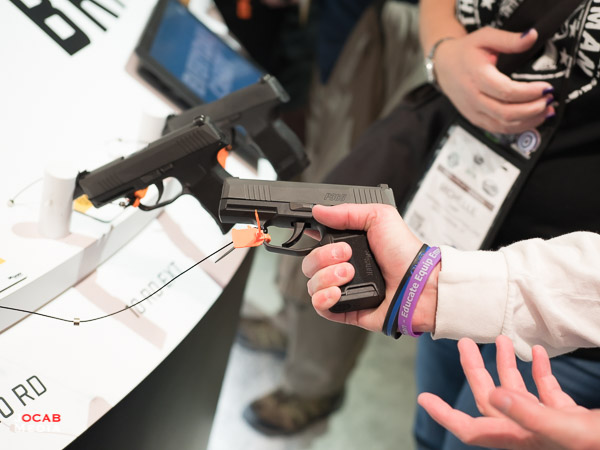




Comment on this post